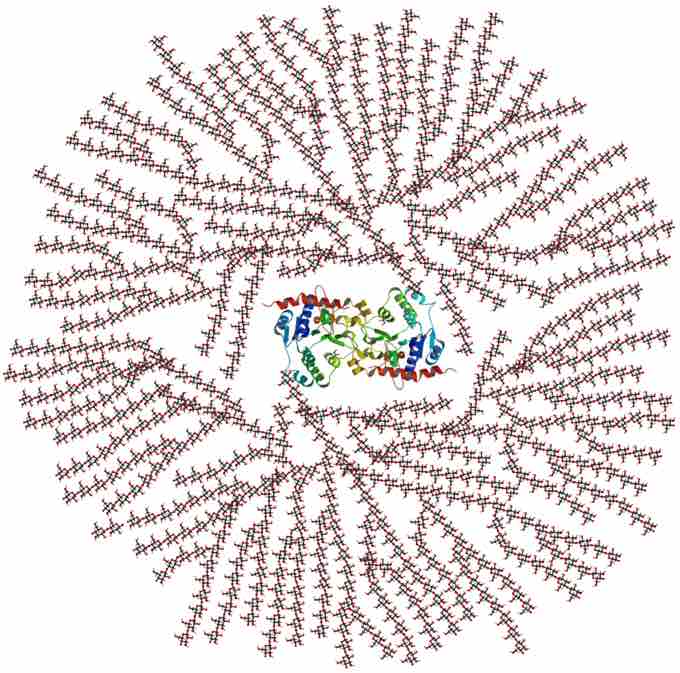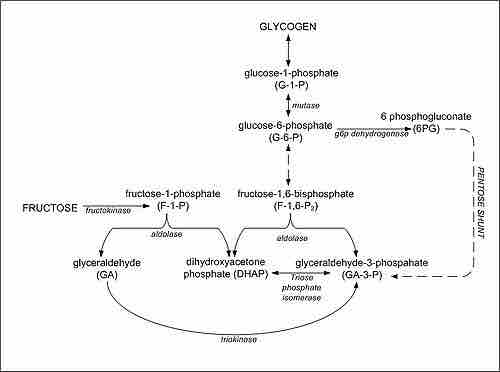You have learned about the catabolism of glucose, which provides energy to living cells. But living things consume more than glucose for food. How does a turkey sandwich end up as ATP in your cells? This happens because all of the catabolic pathways for carbohydrates, proteins, and lipids eventually connect into glycolysis and the citric acid cycle pathways.
Metabolic pathways should be thought of as porous; that is, substances enter from other pathways, and intermediates leave for other pathways. These pathways are not closed systems. Many of the substrates, intermediates, and products in a particular pathway are reactants in other pathways. Like sugars and amino acids, the catabolic pathways of lipids are also connected to the glucose catabolism pathways.
Glycogen Pathway
Glycogen from the liver and muscles, hydrolyzed into glucose-1-phosphate, together with fats and proteins, can feed into the catabolic pathways for carbohydrates.
Glycogen, a polymer of glucose, is an energy-storage molecule in animals. When there is adequate ATP present, excess glucose is shunted into glycogen for storage. Glycogen is made and stored in both the liver and muscles. The glycogen is hydrolyzed into the glucose monomer, glucose-1-phosphate (G-1-P), if blood sugar levels drop. The presence of glycogen as a source of glucose allows ATP to be produced for a longer period of time during exercise. Glycogen is broken down into G-1-P and converted into glucose-6-phosphate (G-6-P) in both muscle and liver cells; this product enters the glycolytic pathway.

Glycogen Structure
Schematic two-dimensional cross-sectional view of glycogen: A core protein of glycogenin is surrounded by branches of glucose units. The entire globular granule may contain around 30,000 glucose units.
Galactose is the sugar in milk. Infants have an enzyme in the small intestine that metabolizes lactose to galactose and glucose. In areas where milk products are regularly consumed, adults have also evolved this enzyme. Galactose is converted in the liver to G-6-P and can thus enter the glycolytic pathway.
Fructose is one of the three dietary monosaccharides (along with glucose and galactose) which are absorbed directly into the bloodstream during digestion. Fructose is absorbed from the small intestine and then passes to the liver to be metabolized, primarily to glycogen. The catabolism of both fructose and galactose produces the same number of ATP molecules as glucose.

Fructose Metabolism
Although the metabolism of fructose and glucose share many of the same intermediate structures, they have very different metabolic fates in human metabolism.
Sucrose is a disaccharide with a molecule of glucose and a molecule of fructose bonded together with a glycosidic linkage. The catabolism of sucrose breaks it down to monomers of glucose and fructose. The glucose can directly enter the glycolytic pathway while fructose must first be converted to glycogen, which can be broken down to G-1-P and enter the glycolytic pathway as described above.